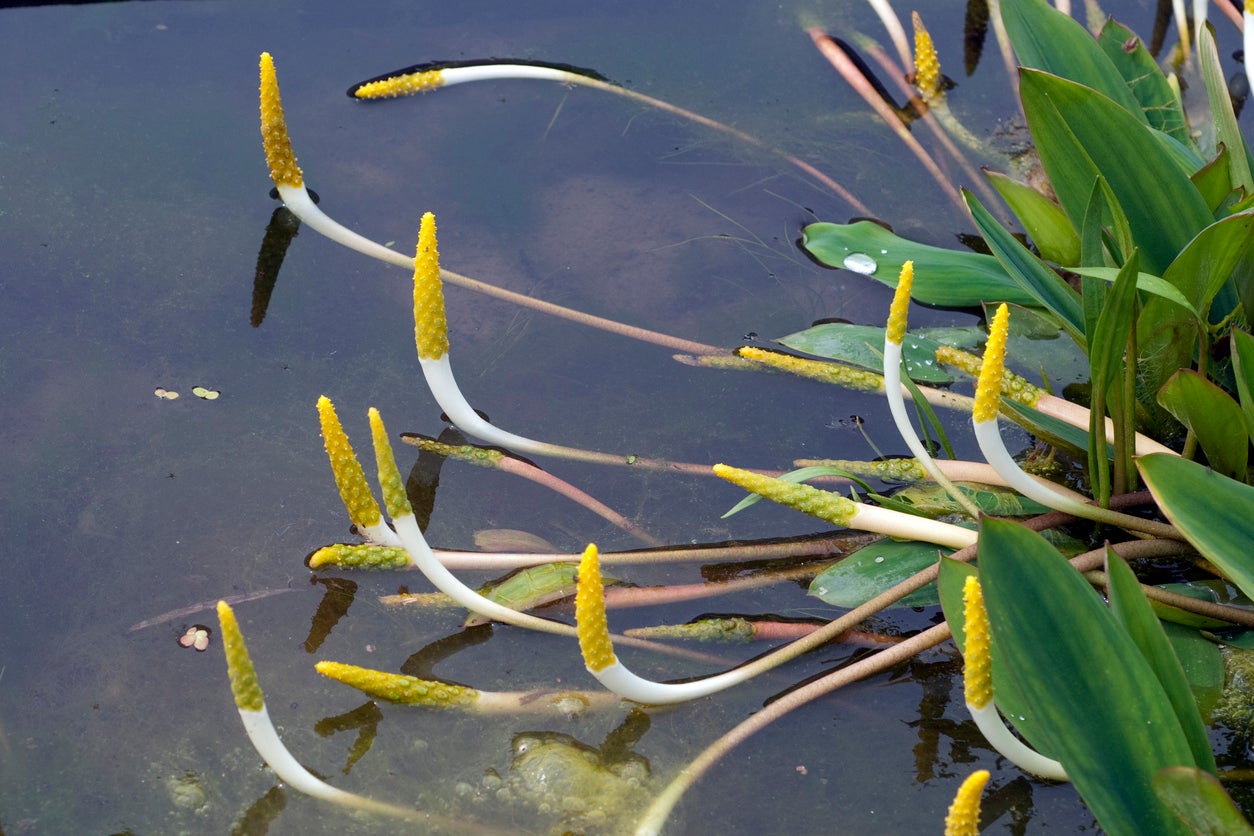What Is Golden Club – Information About Growing Golden Club Water Plants

If you live in the eastern United States, you may be familiar with golden club water plants, but everyone else might be wondering “what is golden club?” The following golden club plant info contains all you need to know about golden club flowers.
What is Golden Club?
Golden club (Orontium aquaticum) is a native herbaceous perennial in the family Arum (Araceae). This common emergent plant can be found growing in streams, swamps, and ponds.
Golden club water plants grow from a vertical rhizome that has thick roots which expand and contract. These contracting roots draw the rhizome deeper into the soil.
The dark green, erect, strap-like leaves of this water plant float atop the surface of the water. The foliage has a waxy texture that repels water. Golden club flowers are long and cylindrical with an inflorescence of tiny yellow flowers and born off a white, fleshy stalk.
The bag-like fruit contains a single seed surrounded by mucus.
Growing Golden Club Plants
If you have taken a liking to these plants, perhaps you’d like to try growing golden club yourself. They make an interesting addition to a landscape water feature and can also be eaten.
Golden club is winter hardy to USDA zones 5 through 10. They can easily be started from seed. Sow the seed in the early summer.
Gardening tips, videos, info and more delivered right to your inbox!
Sign up for the Gardening Know How newsletter today and receive a free copy of our e-book "How to Grow Delicious Tomatoes".
Grow in containers that have been submerged 6 to 18 inches (15-46 cm.) in a water garden or grow the plant in the mud of shallow areas of a pond. Although it will tolerate part shade, golden club should be grown in full sun exposure for the brightest leaf color.
Additional Golden Club Plant Info
These water plants can actually be eaten, however, caution should be taken, as the entirety of the plant is poisonous. The toxicity is the result of calcium oxalate crystals and can be delivered either through ingestion or contact with skin (dermatitis).
This may cause burning or swelling of the lips, tongue, and throat as well as nausea, vomiting, and diarrhea. Contact with the sap may only cause skin irritation. The toxicity is very low if eaten and skin irritation is usually minor.
Both the roots and seeds of golden club water plants can be eaten and are harvested in the spring. The roots should be scrubbed and seeds soaked with warm water to remove any debris. Boil roots for at least 30 minutes, changing the water several times during boiling. Serve them with butter or a squeeze of fresh lemon.
The seeds can be dried just as you would dry peas or beans. To eat them, boil for at least 45 minutes, changing the water multiple times and then serve them as you would peas.
Disclaimer: The content of this article is for educational and gardening purposes only. Before using or ingesting ANY herb or plant for medicinal purposes or otherwise, please consult a physician, medical herbalist, or other suitable professional for advice.

Amy Grant has been gardening for 30 years and writing for 15. A professional chef and caterer, Amy's area of expertise is culinary gardening.
-
 Creative Ideas For Plant Containers: 7 Ways To Save Money And Add Charm To A Garden
Creative Ideas For Plant Containers: 7 Ways To Save Money And Add Charm To A GardenIf you are looking for great ways to add personality to your container gardening – and even save yourself some money – then try these creative ideas for plant containers
By Mary Ellen Ellis
-
 How To Make A Bouquet Garni Or Herb Bundle For Cooking
How To Make A Bouquet Garni Or Herb Bundle For CookingIf you’re a great cook, you may have made an herb bundle before. If this is a new idea, learn how to add sparkle and interest to your dish with a bouquet garni.
By Amy Grant